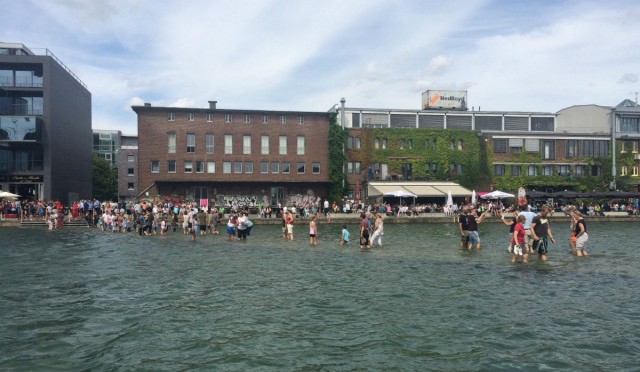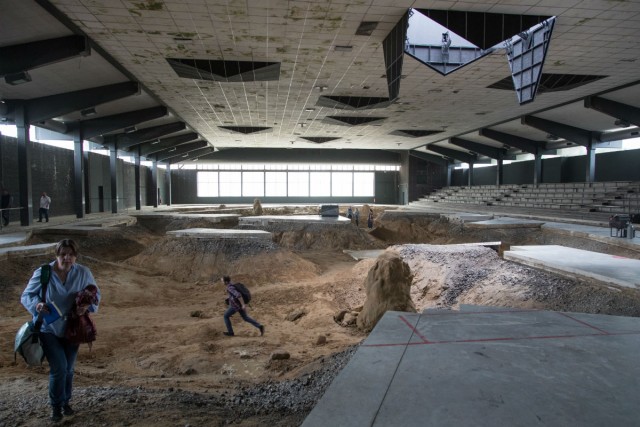For the past several months, tourists from all around the world have been descending upon the chic, bike-friendly university town of Münster, where they can visit installations, sculptures and performances dotted across the city.
The locals don’t mind though. They’re just as keen on seeing all the site-specific works, only they’re able to do so at their leisure at quieter times during the week.
Locals in Münster had no idea the first Skulptur Projekte, founded in 1977, would be such a hit in their city and that every ten years, there’d be an even bigger and better version of the one before it. They also likely didn’t know they’d come to embrace it and take pride in it.
This year's edition includes 35 radical works by artists from 19 different countries. The current exhibition has also expanded this year, including sites for the first time outside of Münster in the nearby city of Marl.
There’s no overarching theme which encompasses all the works, but as a whole they create something like an outdoor sculptural playground that’s not only free, but suitable for adults and children alike.
 Ayse Erkmen's installation entitled “On Water.” Photo: Shelley Pascual.
Ayse Erkmen's installation entitled “On Water.” Photo: Shelley Pascual.
So what sites are a must for you to see?
Definitely Ayse Erkmen’s “On Water,” according to newspaper Westfälische Nachrichten. Erkmen’s work is one the most popular installations featured in the exhibition, probably because of its fun, interactive element. Erkmen set up a bridge that connects two sides of Münster’s Dortmund-Ems canal so that visitors who try their hand at crossing it seem to be walking on water.
Another work that stands out if anything for its sheer size is Pierre Huyghe’s “After a Life Ahead,” in which the artist excavated a former ice rink and ripped apart its concrete floors. The work is described in the Skulptur Projekte catalogue as a “time-based bio-technical system” where the ground is transformed into a “low level hilly landscape.”
 An art installation by Pierre Huyghe called “After a Life Ahead.” Photo: DPA.
An art installation by Pierre Huyghe called “After a Life Ahead.” Photo: DPA.
Thomas Schütte’s “Nuclear Temple” is also a popular choice insofar as it’s become something of a family meeting point. It is made of steel and located where the city’s zoo used to be. And Nicole Eisenman’s installation “Sketch for a Fountain” featuring several figures in the middle of the city’s busy promenade is another well-visited site.
That leaves 31 other works of art you don’t yet know about that are waiting to be discovered.
At the exhibition’s half-way point earlier this month, Westfälische Nachrichten reported that it had already welcomed about 300,000 visitors.
At the opening of the exhibition on June 10th, well-known people in the art world were present, such as Klaus Biesenbach, the director of MoMa in New York City and director of the Tate Gallery in London at the time, Sir Nicholas Serota.
German Culture Minister Monika Grütters was also present at the launch, deeming it a significant cultural event which places Münster decade after decade in the “international spotlight.”
The budget for this year’s edition totalled €7.7 million.
All of the sites are open to the public daily from 10am to 8pm and on Fridays from 10am to 10pm.
The decennial event also always coincides with another one of Germany’s international art exhibitions, Documenta. Some 200 kilometres away from Münster in Kassel, Documenta features contemporary art and takes place once every five years.
With DPA



 Please whitelist us to continue reading.
Please whitelist us to continue reading.